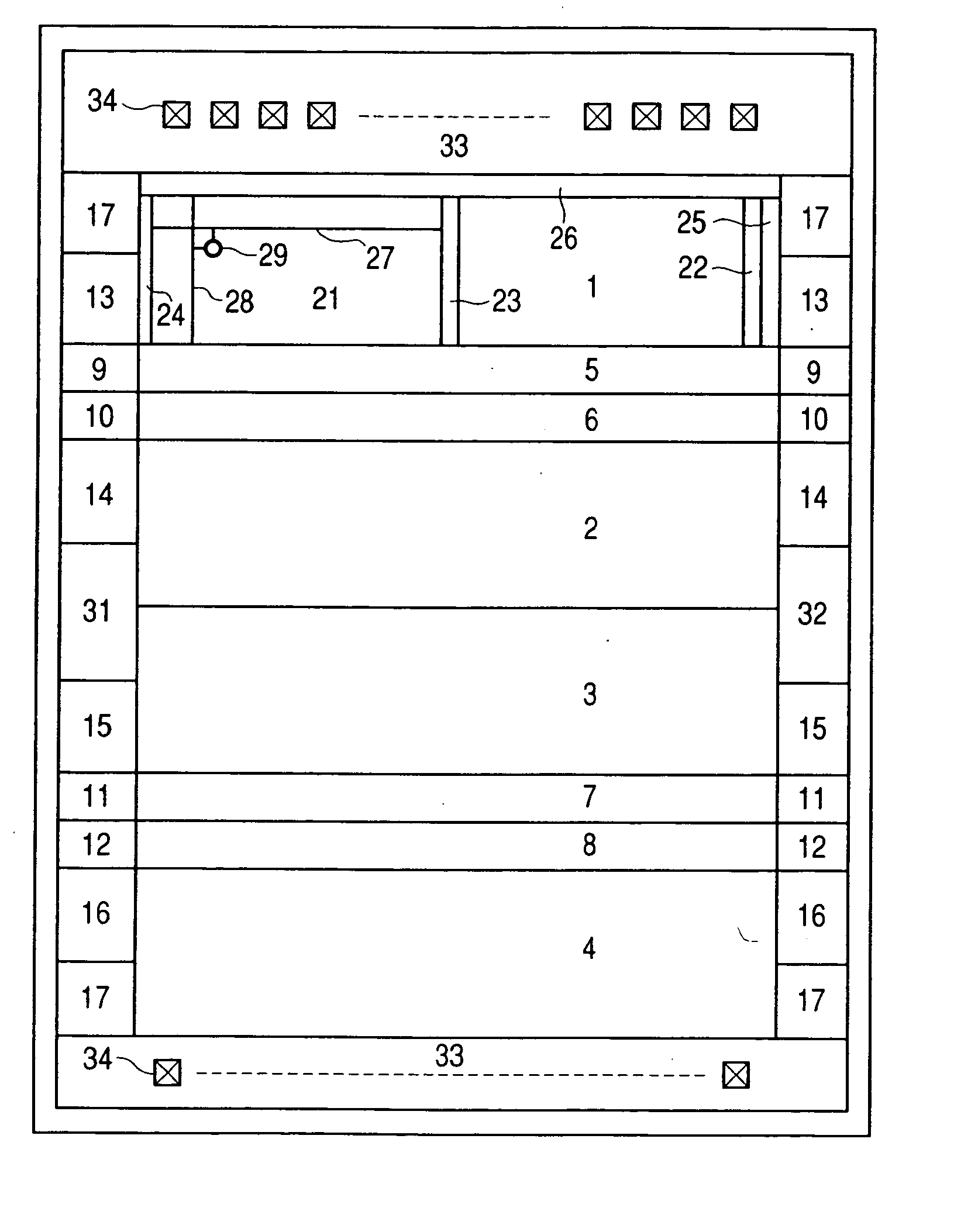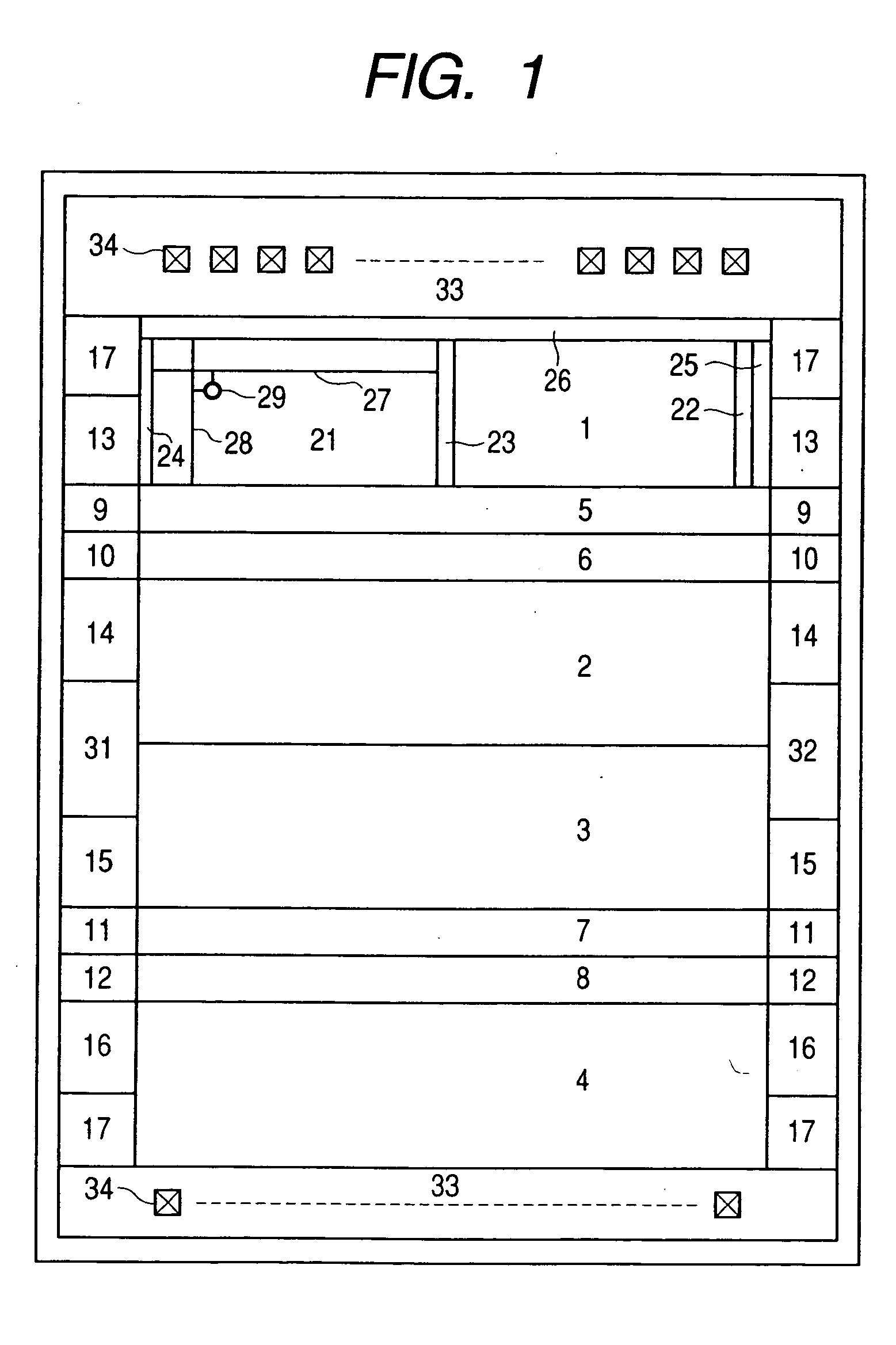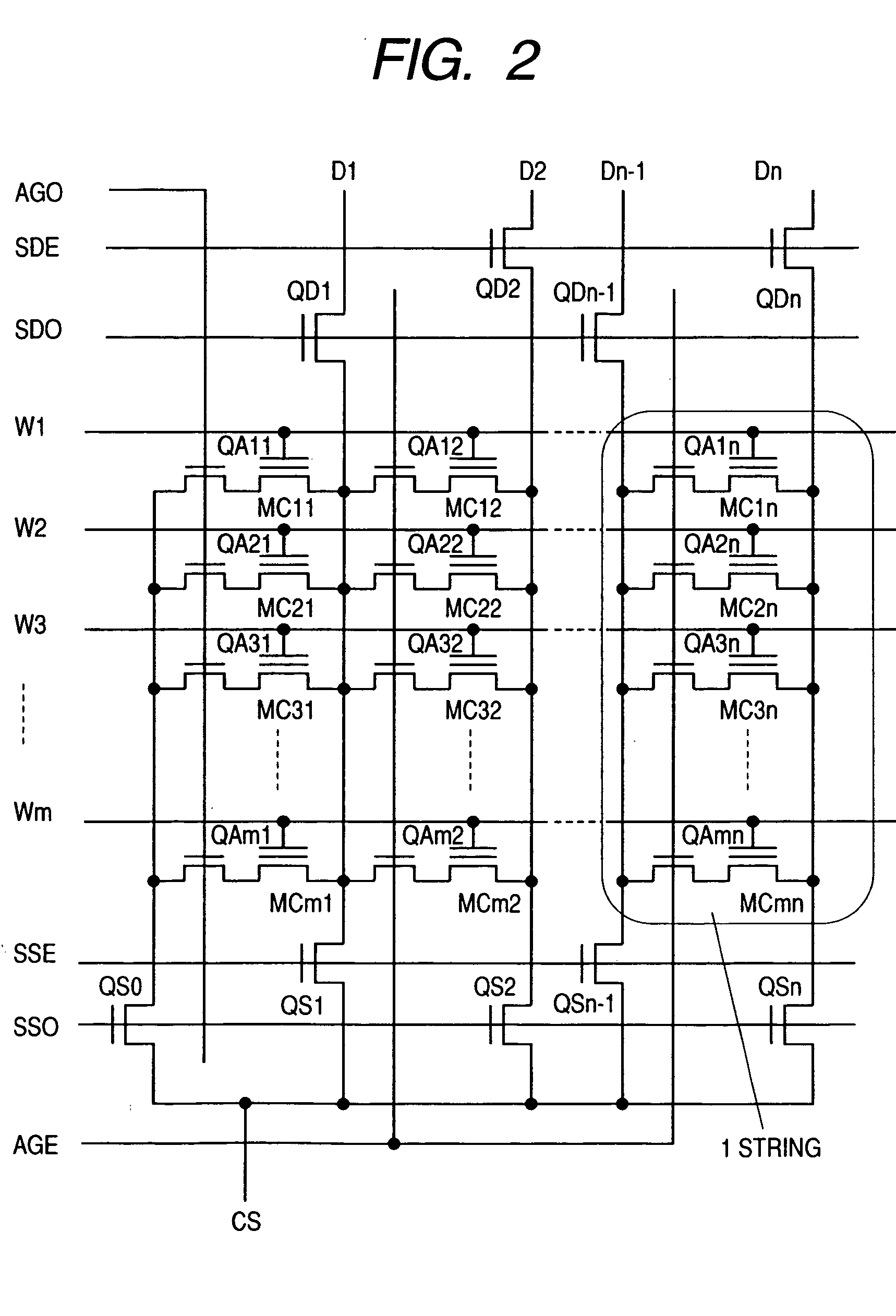Nonvolatile semiconductor memory device
a semiconductor and memory device technology, applied in static storage, digital storage, instruments, etc., can solve the problem of taking time to transfer write data, and achieve the effect of reducing the number of data transfers, and speeding up the write operation
- Summary
- Abstract
- Description
- Claims
- Application Information
AI Technical Summary
Benefits of technology
Problems solved by technology
Method used
Image
Examples
Embodiment Construction
[0052] The best modes for carrying out the present invention will be described in detail below with reference to drawings. In all the drawings illustrating the modes for implementation, members having the same function will be denoted by respectively the same reference signs, and their description will not be repeated.
[0053] One example of configuration of a flash memory in one mode of realizing the nonvolatile semiconductor memory device will be described with reference to FIG. 1.
[0054] The flash memory in this mode for carrying out the invention maybe for example, though not limited to, a flash memory configured of a plurality of banks capable of storing in each of its memory cells data of a plurality of bits as a threshold voltage and each capable of operating independently of others; it comprises four banks 1 through 4; sense latch rows 5 through 8, Y access circuits 9 through 12 and SRAMs 13 through 16 respectively corresponding to the banks 1 through 4; and an indirect circu...
PUM
 Login to View More
Login to View More Abstract
Description
Claims
Application Information
 Login to View More
Login to View More - R&D
- Intellectual Property
- Life Sciences
- Materials
- Tech Scout
- Unparalleled Data Quality
- Higher Quality Content
- 60% Fewer Hallucinations
Browse by: Latest US Patents, China's latest patents, Technical Efficacy Thesaurus, Application Domain, Technology Topic, Popular Technical Reports.
© 2025 PatSnap. All rights reserved.Legal|Privacy policy|Modern Slavery Act Transparency Statement|Sitemap|About US| Contact US: help@patsnap.com



